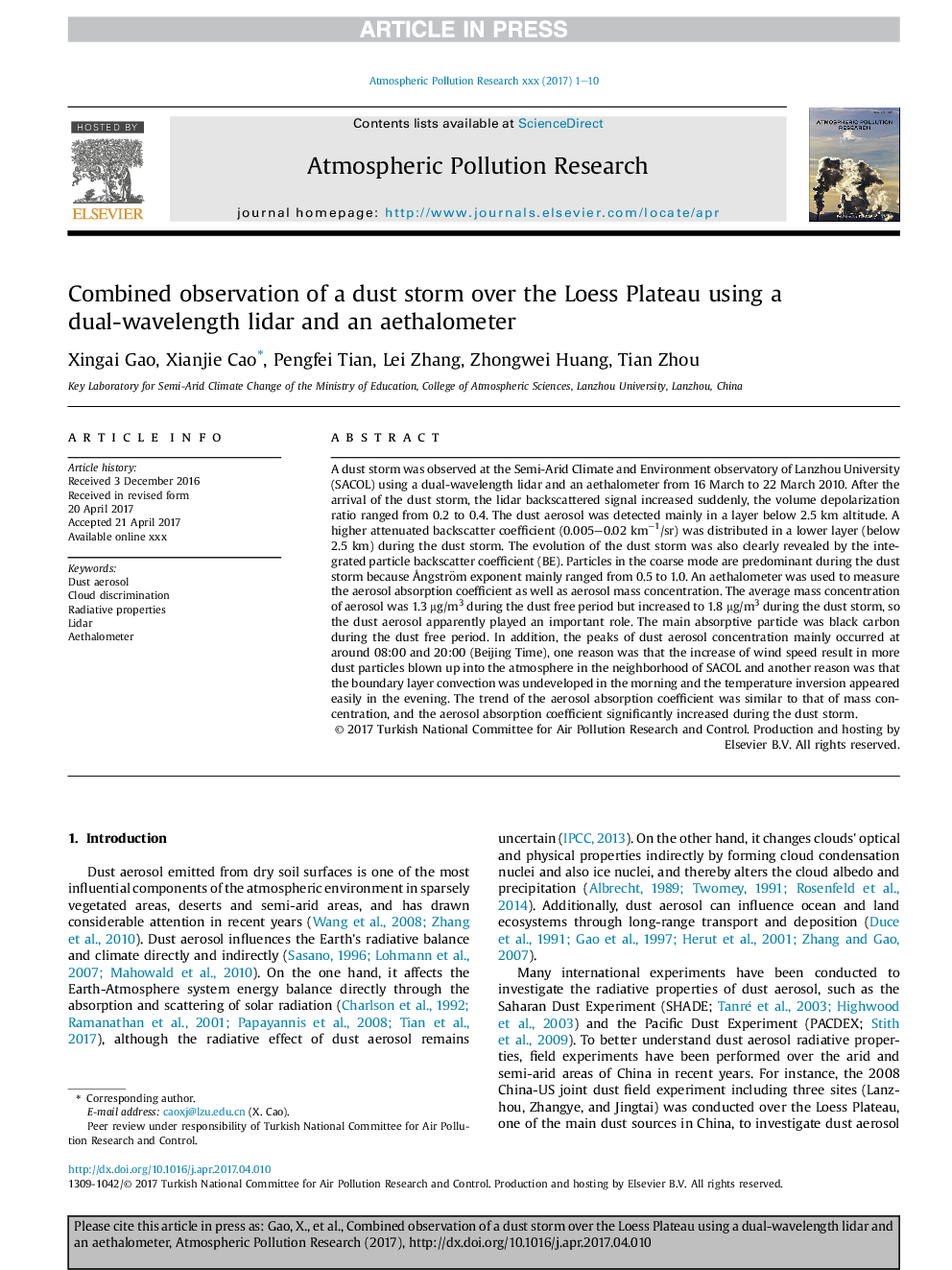| Article ID | Journal | Published Year | Pages | File Type |
|---|---|---|---|---|
| 8862694 | Atmospheric Pollution Research | 2017 | 10 Pages |
Abstract
A dust storm was observed at the Semi-Arid Climate and Environment observatory of Lanzhou University (SACOL) using a dual-wavelength lidar and an aethalometer from 16 March to 22 March 2010. After the arrival of the dust storm, the lidar backscattered signal increased suddenly, the volume depolarization ratio ranged from 0.2 to 0.4. The dust aerosol was detected mainly in a layer below 2.5Â km altitude. A higher attenuated backscatter coefficient (0.005-0.02Â kmâ1/sr) was distributed in a lower layer (below 2.5Â km) during the dust storm. The evolution of the dust storm was also clearly revealed by the integrated particle backscatter coefficient (BE). Particles in the coarse mode are predominant during the dust storm because Ã
ngström exponent mainly ranged from 0.5 to 1.0. An aethalometer was used to measure the aerosol absorption coefficient as well as aerosol mass concentration. The average mass concentration of aerosol was 1.3 μg/m3 during the dust free period but increased to 1.8 μg/m3 during the dust storm, so the dust aerosol apparently played an important role. The main absorptive particle was black carbon during the dust free period. In addition, the peaks of dust aerosol concentration mainly occurred at around 08:00 and 20:00 (Beijing Time), one reason was that the increase of wind speed result in more dust particles blown up into the atmosphere in the neighborhood of SACOL and another reason was that the boundary layer convection was undeveloped in the morning and the temperature inversion appeared easily in the evening. The trend of the aerosol absorption coefficient was similar to that of mass concentration, and the aerosol absorption coefficient significantly increased during the dust storm.
Related Topics
Physical Sciences and Engineering
Earth and Planetary Sciences
Atmospheric Science
Authors
Xingai Gao, Xianjie Cao, Pengfei Tian, Lei Zhang, Zhongwei Huang, Tian Zhou,
